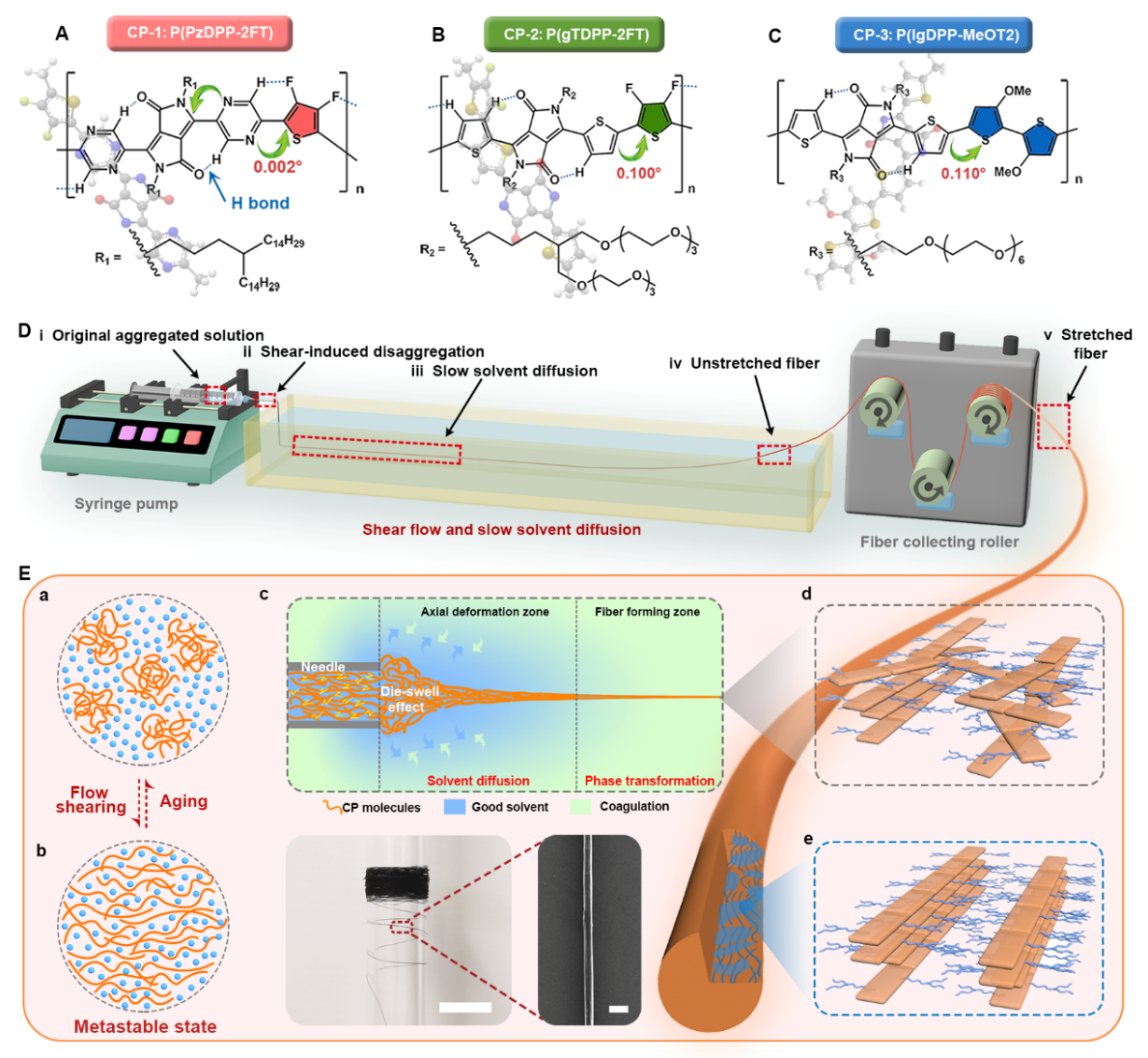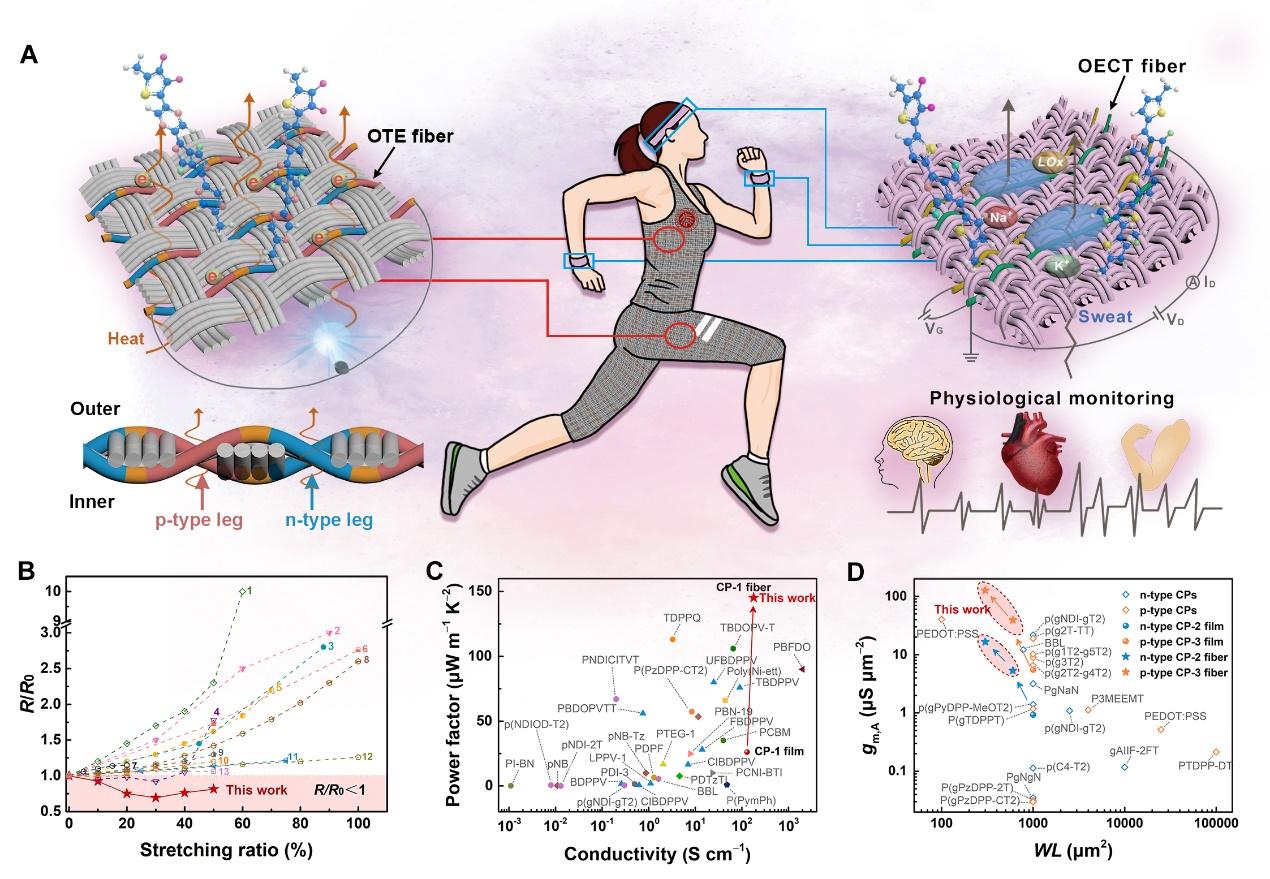Fibersex hibita unique one-dimensional structure, excellent flexibility, and weaveability, making them highly suitable for seamless integration into fabrics and wearable devices, showing great potential in the field of wearable electronics. Despite the importance of both mechanical and electrical properties for electronic fibers, achieving optimal performance in both areas is challenging. Conjugated polymers show excellent optoelectronic properties, offering broad application prospects, and processing them into fibers will further expand their use in wearable devices. However, the poor mechanical properties of conjugated polymers and immature spinning processes have hindered their application in fiber electronics and wearable technology.
Recently, the Ting Lei's Group from Peking University published a research paper titled“Continuous production of ultratough semiconducting polymer fibers with high electronic performance”in Science Advances(DOI: 10.1126/sciadv.adk0647). This study introducesan innovativewet-spinning technology called“flow-enhanced crystallization”(FLEX), by which the polymer chains areeffectivelydispersed and pre-aligned. This method has successfully fabricated various conjugated polymers into fibers and achievedcontinuous fiber production (Figure 1). Unlike traditional wet-spinning methods, the authors propose a strategy that reducespolymer aggregation and promotesthe disaggregation of polymer chains under the influence of stretching and shearing flows. By further controlling the solvent diffusion patterns in the coagulation bath and post-drawing, they obtained highly oriented and crystallized polymer semiconducting fibers. Interestingly, the authors observed an orderly arrangement and crystallization behavior of alkyl side chains in the fibers—a phenomenon that has never been observed in thin films.

Figure 1.Schematic diagram of semiconducting polymers and continuous spinning method of FLEX used in this study
The FLEX method enhances the alignment and crystallization of polymer chains within the fibers, endowing the semiconducting fibers with superior mechanical and electrical properties, making them suitable for wearable and bioelectronic devices (Figure 2A). The semiconducting fiber exhibited high n-type doping electrical conductivity and a unique strain-induced conductivity enhancement characteristic (Figure 2B) and can be utilized in fiber thermoelectric (OTE) and fiber organic electrochemical transistor (OECT) devices. Compared to traditional thin-film devices, the fiber devices show a significant enhancement in performance (Figures 2C-D). Notably, the power factor (PF) of the fiber OTE devices and the transconductance (gm,A) of the fiber OECTs are among the highest values to date. The authors have also developed lactate sensors and ECG signal sensors, which demonstrate excellent sensitivity and signal-to-noise ratio.
This work demonstrates that polymer semiconducting fibers prepared through the FLEX spinning method exhibit superior electrical and mechanical properties compared to conventional thin films. The FLEX spinning method and the fluid dynamics control strategy proposed in this research will serve as a universal approach and strategy, offering new insightsintothe production and application of polymer semiconducting materials.

Figure 2. Electrical performance of semiconducting fibers and their wearable and bioelectronic applications.
Zhi Zhang from the School of Materials Science and Engineering of Peking University is the first author. Ting Lei, an associate professor, is the corresponding author. This work also acknowledgesthe contributions of Prof. Yuanlong Shao and Prof. Shixian Lv at the School of Materials Science and Engineering of Peking University.
This research was supported by the National Key R&D Program of China, the National Natural Science Foundation of China, the Beijing Natural Science Foundation, the China Postdoctoral Science Foundation, the Molecular Materials and Nanofabrication Laboratory (MMNL) at the College of Chemistry and Molecular Engineering of Peking University, and the High-Performance Computing Platform at Peking University.